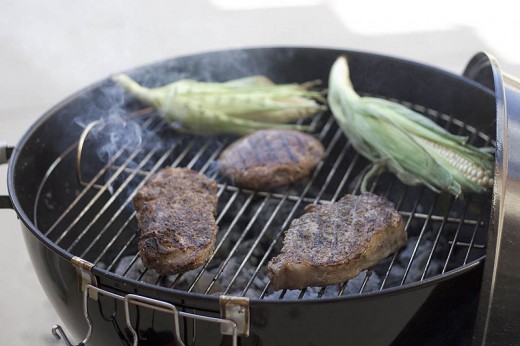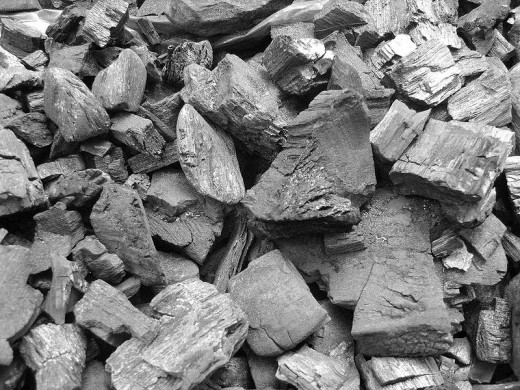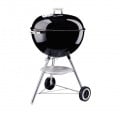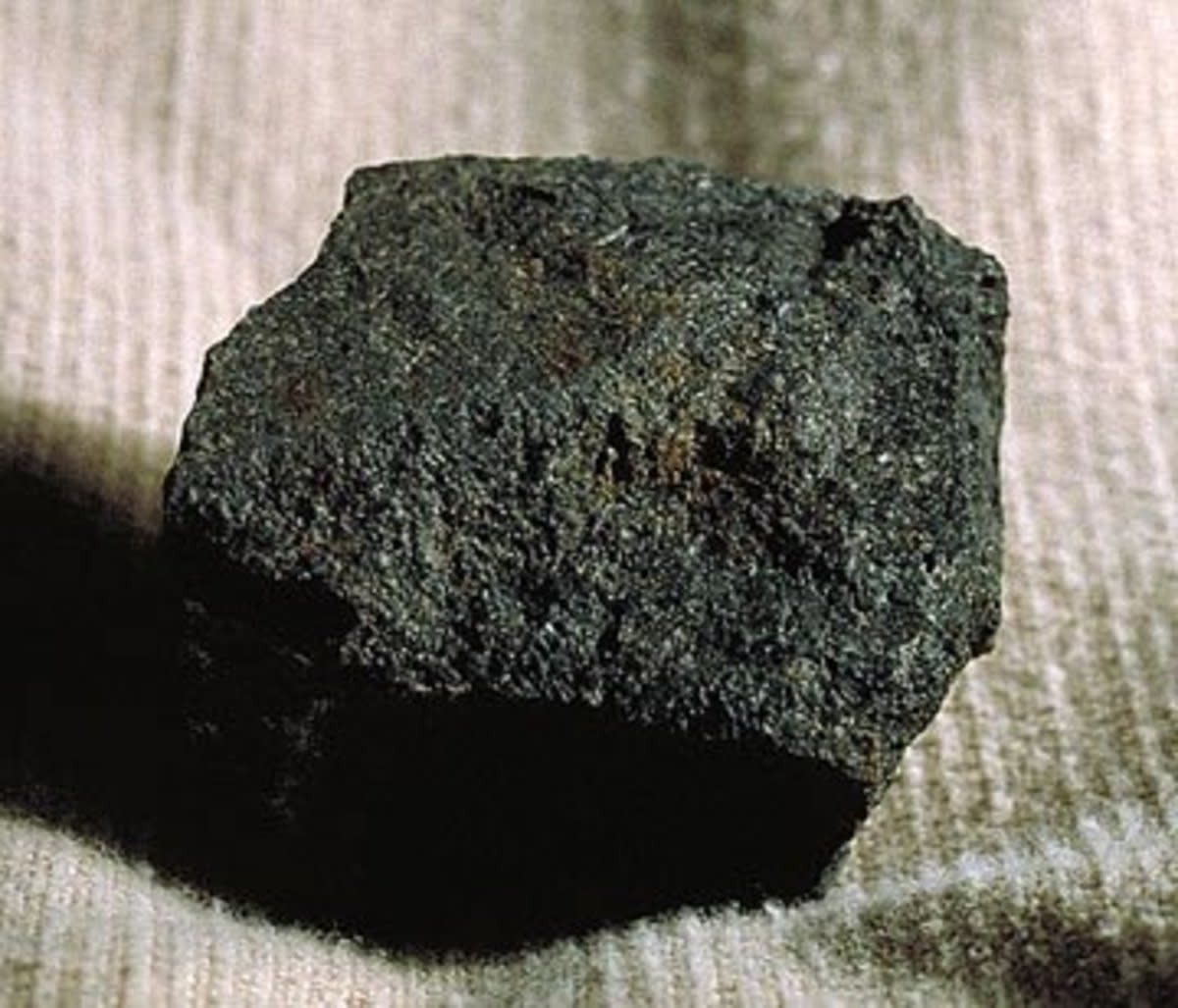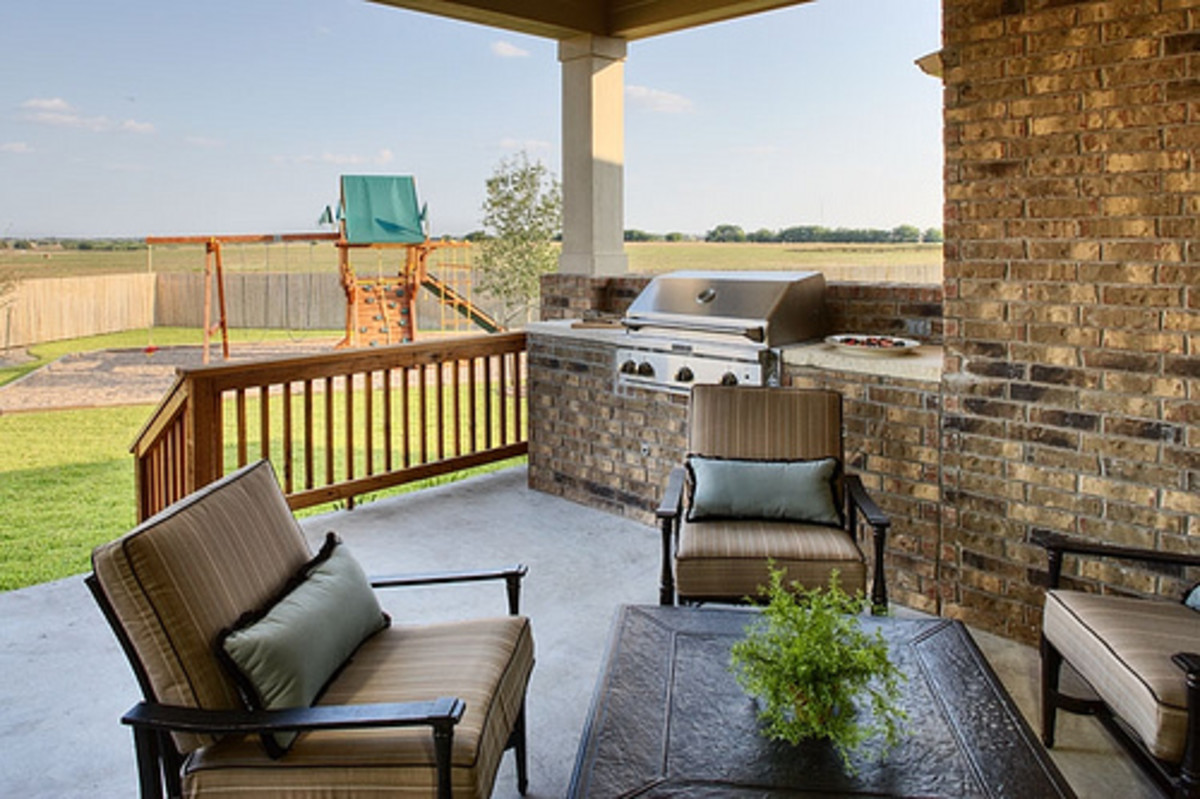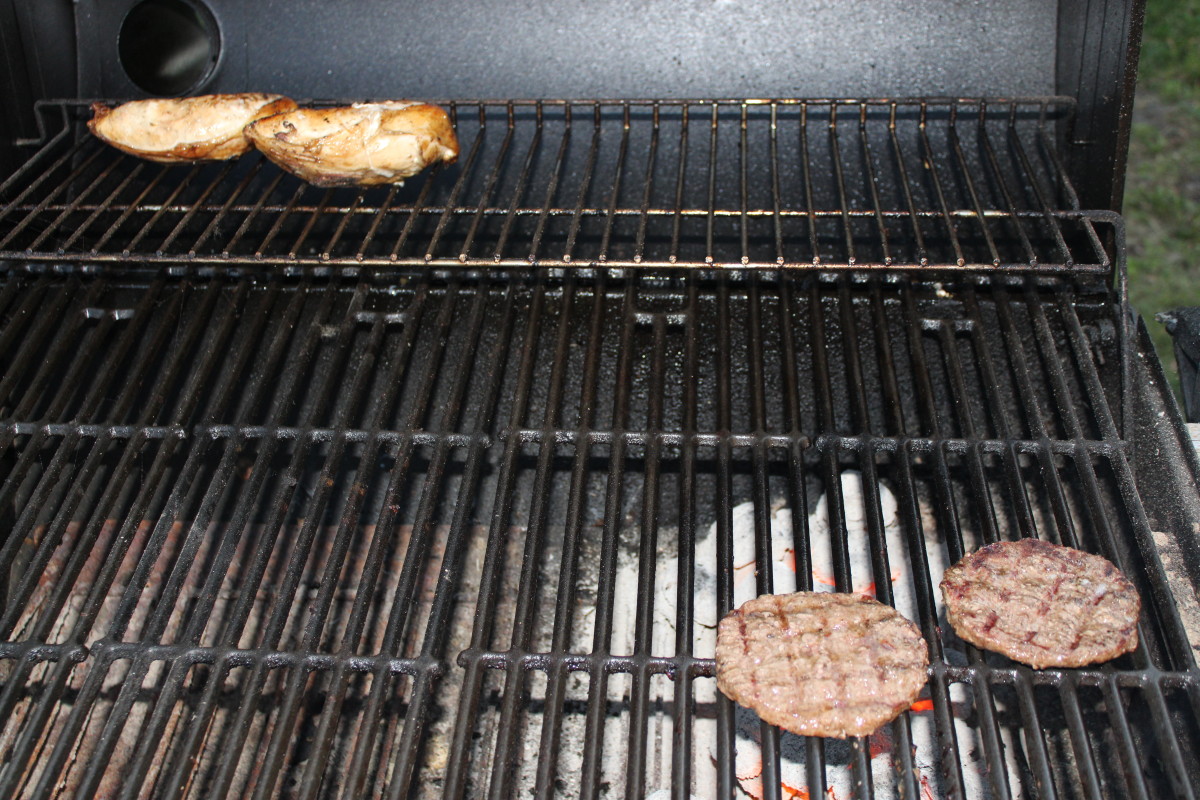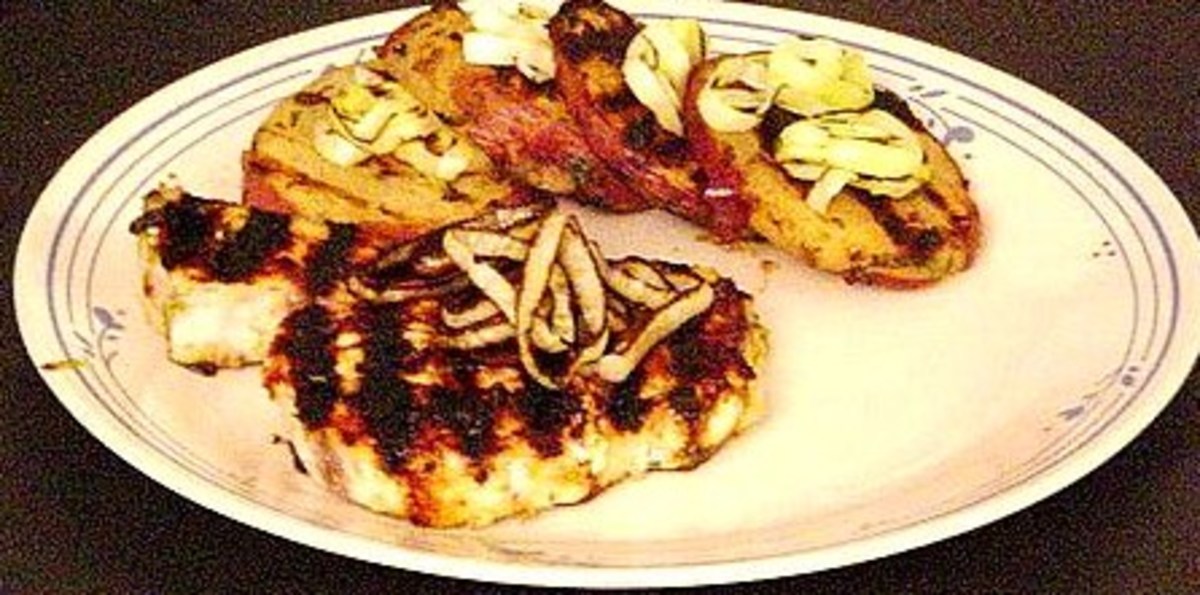Summer Grilling - Part Three - Cooking with Charcoal
Cooking with Charcoal
June 23, 2011
This is the third of a four part series on outdoor grill cooking. This article will discuss the advantages and disadvantages of a charcoal fired grill.
As with a gas fired grill, size and price are not the most important factors. By and large gas grills are a more expensive initial purchase and frankly, you can buy a disposable charcoal grill, complete with charcoal, for about twenty bucks.
But if you love the flavor and aromas of outdoor cooking you are likely to want to spend a bit more and buy a grill that will last for at least five years. Five years of delectable cooked goodness at that.
Charcoal grills have a number of disadvantages. They are:
- Slow startup time
- Lingering flavors from charcoal lighter fuel
- Limited coal life
- Carbon monoxide pollution
- Hard to quench coals once started
- Ash disposal
This hub will address all of these concerns including the unmentioned one; the potential problem of air pollution.


Charcoal's Many Uses
Charcoal is not just an ideal heat source for cooking. It is also a sought after fuel source for:
-
Individual iron and steel craftspersons (blacksmiths)
-
Industrial fuel in forges and foundries
-
As a source for automotive fuel (still used in some parts of China)
-
As a filtration material
-
As drawing pencils
-
As a fertilizer
-
As a digestive aid
What is Charcoal?
Lump Charcoal
Charcoal is wood that has been subjected to high heat in the absence of oxygen. The end result of this process is a material that is largely carbon with little else. The resulting material has had most of it's organic resins and water burned off or driven out. For that reason charcoal is considerably lighter in weight than the original wood though it will retain the same shape and texture.
What is left over is dry, highly combustible, clean burning and black...resembling coal. Because charcoal has been subjected to high temperatures with little oxygen tree sap, resin, and other compounds are driven out of the wood leaving a still combustible, but odor and taste free heat source. These properties make charcoal an excellent fuel for cooking.
Charcoal Briquettes
Charcoal briquettes are actually composed of low quality coal or coke bonded together with wax, wood dust and binders. Briquettes, unless marked otherwise, are not actual charcoal. However, when used as a cooking fuel it is very hard to tell the difference between briquettes and lump charcoal.
"Charcoal" briquettes are the most common form of charcoal in the Americas with Kingsford the leader in the production of these briquettes.
Charcoal Grills
Charcoal grills are both less complicated and more specific in their design. Since flammable gas does not have to be routed to a burner, fire starting mechanisms are not required and fuel regulation is predetermined by the amount of charcoal used, a lot of the complexity of a gas grill is just not there in a charcoal grill.
For this reason charcoal grills are typically half (or less) the cost of a gas fired equivalent.
A charcoal grill typically consists of, from bottom to top, an ash collection system, bottom venting, grill grating, and a cover with adjustable vents in the top. Some charcoal grills have have a lower grating where the coals sit with a larger grill grating for the food. Some grills do not have an ash collection system and ashes are dumped or swept out when the grill cools down.
Some have a special repository for the burning coals that is offset from the grill grating such that the food to be cooked is not directly exposed to the heat from the coals. These grill designs are more for bar-b-que than for grilling.
Bar-B-Que and Grilling
The main differences between grilling and bar-b-queing are time and temperature.
Here in the United States, Bar-B-Que is "low and slow" using lower temperatures and longer periods of time to cook the food. Grilling involved high temperatures (often at or above 500° F) and short cooking times.
In the United Kingdom these definitions are completely reversed with bar-b-que being high heat and quick cooking times and grilling involving low heat and long cooking times.
Starting a Charcoal Fire
As with the gas grill, cooking begins when the right temperatures have been reached.
With a charcoal grill these temperatures can be determined by the state of the charcoal. Once lit, if all of the coals have a fine coating of white ash, the coals are ready to cook with. If cooking at night the tell tale sign of ready coals is a nice red glow.
Once the coals have reached this stage it is best dump the coals in the grill, mount the grill grating, clean and oil that grating, and place the food on as soon as possible.
Lighting the Charcoal
There are two main ways of lighting charcoal. One involves a liquid fuel starter that is either added to the charcoal and ignited or comes already on the charcoal in the packaging. The other way involves a specially built "charcoal chimney" designed exclusively for starting charcoal fires.
Lighter Fuel
The most common method of lighting coals is with "self starting" charcoal or lighter fuel. The coal is piled in the grill, typically in a pyramidal cone, the charcoal is liberally doused with the fuel, the fuel is allowed to soak into the charcoal for a few minutes and then a match or lighter is used to ignite the pile.
You then wait until the coals have a fine ash patina, spread them out, place the grill over the pile and start to cook. This process can take twenty minutes to a good half hour.
This used to be the way I started every charcoal fire and I always hated it. I hated it because I could always smell the starter fuel long after it should have all burned off. It took entirely too long and I even imagined that I could taste the fuel in my meal. I never liked that, but I was certain this was the most reliable way to start a charcoal fire.
I was wrong.
Charcoal Chimney
A charcoal chimney (see items at right) is specifically designed to light charcoal. It is a long steel tube with a divider about 1/4 of the way from the bottom. The divider is perferated with large holes, but the holes are not large enough to allow lump or briquette charcoal to fall through.
Around the periphery of the tube, just below the divider are holes large enough to admit a large amount of air and an ignition source; typically a lighter.
Three half-sheets of newpaper are loaded into the bottom of the chimney making sure none of the paper obstructs the air holes around the outside. The chimney is then inverted and the larger chamber is filled with lump or briquette charcoal.
The paper used can be newsprint, glossy ad stock, or color grocery ads. Almost all newspaper ink used these days is soy based. Because ink is soy based the paper burned will not impart volatile organic compounds into the coals.
The chimney is then moved to the grill with the grate in place, a match or lighter is used to set the paper afire, and then you wait until the top, visible layer of charcoal displays a fine layer of ash. This takes about ten minutes start to finish.
All chimneys have a large insulated handle and a heat shield between the cylinder and that handle. Some have a lifting bail in addition to the handle.
The advantages of the charcoal chimney are:
- No liquid fuel is required
- Ordinary newspaper is the ignition source.
- Since modern newspaper uses soy ink. no noxious fumes are created
- Charcoal starts twice as fast and burns hotter than coals lit with liquid fuel
The chimney typically pays for itself by the tenth or fifteenth fire depending on the price of starter fuel and the chimney itself.
Since I started using a chimney I have not been remotely tempted to use liquid fuel again. I no longer worry about fuel fumes or volatile organic compounds contaminating the flavor of my food.
Finally a chimney started fire reaches the proper cooking temperature faster than a gas grill.
Preparing the Grill
As with a gas grill, once the coals have reached the desired temperature place the grill grating over the fire, allow the grating to heat for a few minutes, clean the grating with a brush, oil the grating and then place the food to be cooked.
Because charcoal produces high temperatures (around 500° F) most foods cooked on a grill will be lightly charred as they cook. Cooking times will be short with most items cooking in ten minutes or less.
Of course if you are cooking a roast, whole bird (such as chicken) or a rack of ribs cooking times will need to be extended.
Grilling
The best way to determine the doneness of the food item is by touch or temperature. Thin items such as hamburger or hotdogs will cook completely in about four to six minutes.
Steaks at an inch or less thick can be cooked for ten to twelve minutes using the touch test to determine the degree of done.
The touch test can be replicated by touching any of your four fingers to your thumb and then pressing on the pad below your thumb for "give." The same amount of "give" on your steak will indicate rare, medium rare, medium, or well done.
- Touching your index finger and thumb will give you a soft "give" on the pad below your thumb; this is about the same amount of "give" you would expect on a rare steak.
- Touching your long finger to your thumb will give you a firmer "give" on the pad below your thumb; this same amount of "give" on your steak is medium rare
- Following the two examples above touching your ring finger to your thumb will replicate the give of medium
- Finally touching your pinky to your thumb will give you the same amount of give as a well done steak
If you are grilling a cut up bird the same rules above apply where you will want at least the give of medium or well done. You don't want to "fool around" with chicken and undercook it.
Rekindling the Fire
There are two different things you can do to prevent a dying fire. You can add charcoal or you can use a higher grade charcoal to begin with.
Hardwood Charcoal
If, for example, you are cooking a roast or rack of ribs that will take a half hour or more start with hardwood charcoal instead of lump. Hardwood burns hotter, longer, and in most cases cleaner. It will also impart a smokey flavor missing from lump or briquette charcoal.
Adding Charcoal
The other way of rekindling a fire is by adding charcoal. I recommend relighting it with a chimney, but you can also add unlit charcoal to your fire. Of course the fire will cool a bit as the new coal lights and become suitable for cooking. During this time your food will be off to the side, along with the grating, waiting for the lump or briquettes to come up to temperature.
By relighting your coals with a chimney you reduce the wait time of restarting your fire and reduce the time the food is off of the grill.
Flavor Enhancing with Smoke
You can impart smokey flavor by using charcoal with hickory or mesquite embedded in the briquettes or by buying hickory or mesquite chips to add to the fire.
if using coals with the hickory or mesquite in them nothing more need be done, but if you are using wood chips soak them overnight in water so they don't burn up immediately. They will produce more smoke this way before they catch fire and burn up.
Quenching the Coals
If you are done cooking but still have some "life" in your coals you can quench them, without water, for use another day.
To kill a fire simply cut off its air supply. Close both the top and bottom vents and cover the fire. It will go out within minutes.
Ash Disposal
Don't throw your ashes away.
If you have recycling in your neighborhood drop them in the compost (green) bin. Just make sure they are cold ashes not live embers. The ashes will improve the city compost considerably.
If you have a garden, sprinkle the ashes over the beds. Plants love the ash and potassium left over in the ash. It actually makes a first rate fertilizer.
Wrapping Up
All of the "disadvantages" of charcoal can be directly addressed and corrected. The following disadvantages and solutions are:
- Starting the fire takes time; use a chimney
- Noxious lighter fuel fumes are eliminated with the use of a chimney
- Charcoal starts out quite hot and cools over time, but hardwood charcoal burns longer
- Quench the coals by cutting off the air supply
- Ashes make excellent fertilizer
Disclaimer
The author was not compensated in any way, either monetarily, with discounts, or freebies by any of the companies mentioned.
Though the author does make a small profit for the word count of this article none of that comes directly from the manufacturers mentioned. The author also stands to make a small profit from advertising attached to this article.
The author has no control over either the advertising or the contents of those ads.

